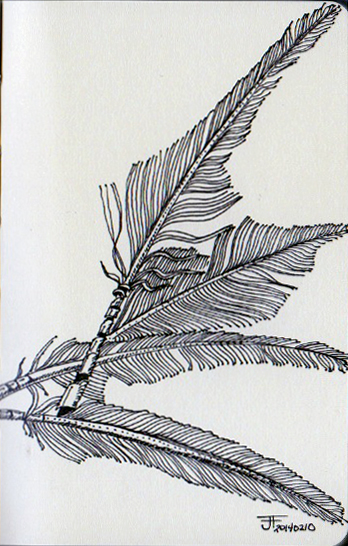— Swapped and residing in Gerona, Spain —
“The seasonal urge is strong in poets. Milton wrote chiefly in winter. Keats looked for spring to wake him up (as it did in the miraculous months of April and May, 1819). Burns chose autumn. Longfellow liked the month of September. Shelley flourished in the hot months. Some poets, like Wordsworth, have gone outdoors to work. Others, like Auden, keep to the curtained room. Schiller needed the smell of rotten apples about him to make a poem. Tennyson and Walter de la Mare had to smoke. Auden drinks lots of tea, Spender coffee; Hart Crane drank alcohol. Pope, Byron, and William Morris were creative late at night. And so it goes.”
― Helen Bevington
I participated in a Sketch Swap organized by the Urban Sketchers group. I was paired up with someone from Gerona, Spain and I received his painting today in the mail. It was such a great feeling to receive it — he actually sent me a video, and a nice historical explanation of his city.
So the following painting is the one that I sent him. The architecture of the house is a typical “vernacular” or cottage type house with two slopes. Neoclassical style, around 1825, 1-1/2 stories, with symetrical opening. The floors are usually very close to the earth (no basement) with a bas-côté named “tambour” in French. When settlers arrived in Canada, there were alot of trees… so all of our architecture is wood-based, especially houses that lie in the countryside. This house was painted on location in Coteau-Landing, Québec, Canada and is on a very quiet side road where not many cars or humans, go to. It is very typical of our older houses.
J’ai participé à un Sketch Swap avec les Urban Sketchers où nous étions mis en binôme… moi je devais peindre pour une personne à Gérone, Espagne et vice versa. J’ai reçu sa peinture aujourd’hui et c’était assez trippant. Pour ma part, je lui ai fait parvenir la peinture ci-bas, qui représente une maison rurale avec une architecture assez typique du Québec. Architecture vernaculaire ou style néoclassique, environ 1825, 1-1/2 étage sans sous-sol avec un bas côté nommé “tambour”.
Paper: Saunders Waterford CP 12″ x 9″













